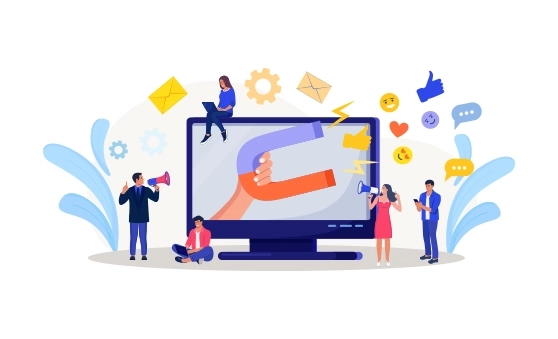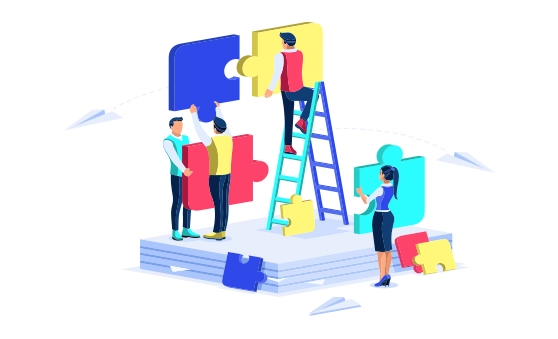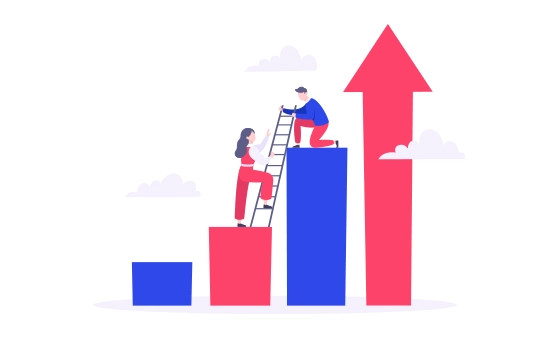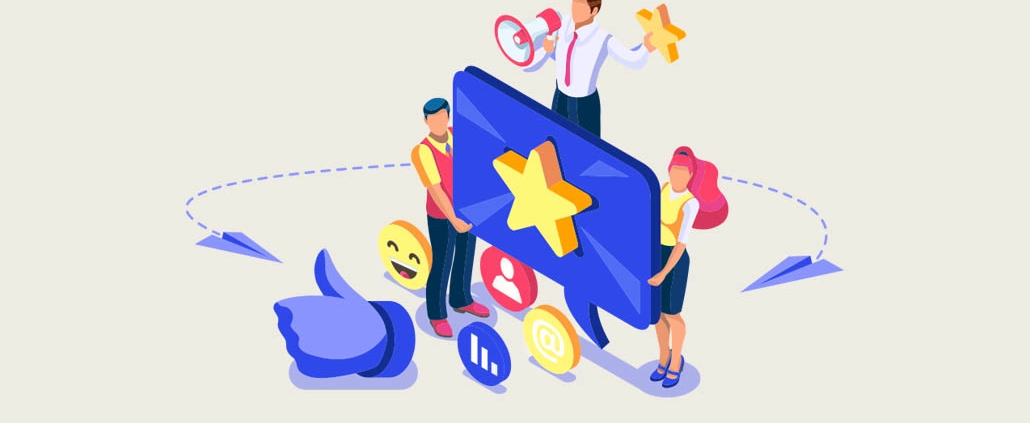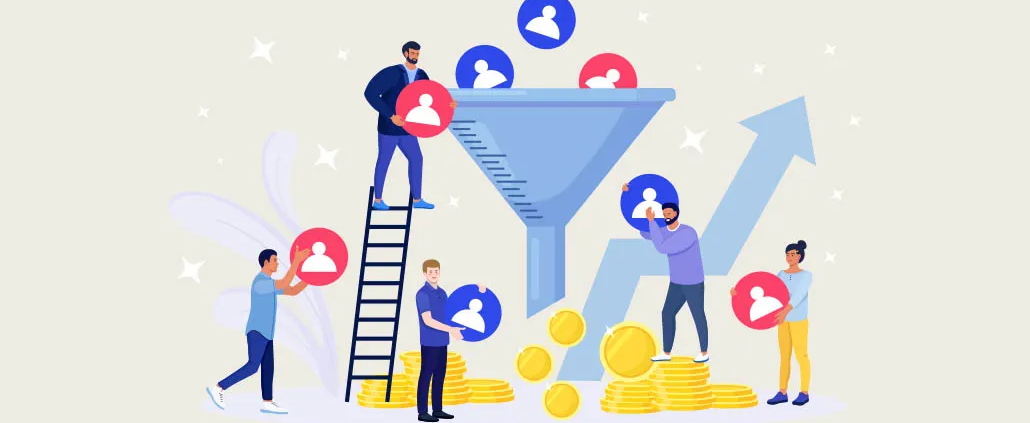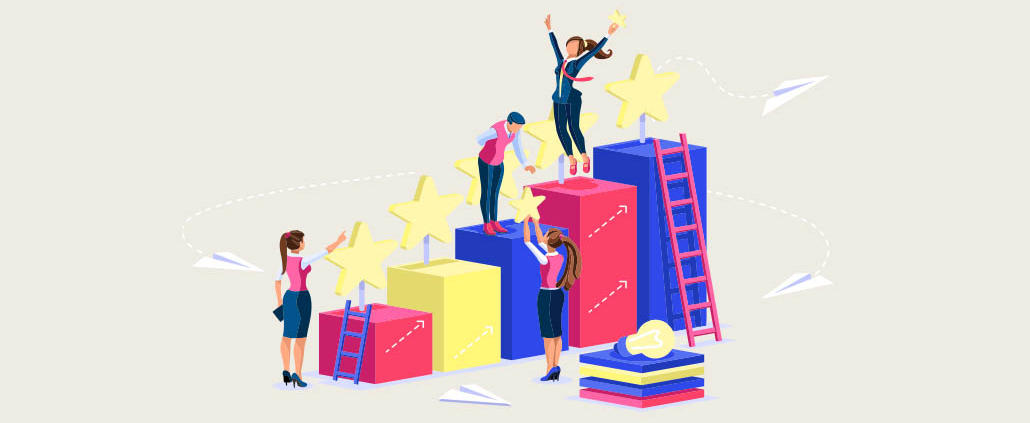Employee recognition is not a feel-good gesture; it’s fundamental in driving the success and growth of any business. Not only is it an act of gratitude, but employee recognition is also an essential tool in unlocking the full potential of a workforce.
In this blog post, we’ll explore employee recognition, its significance, and its effects in the workplace. We will discuss employee recognition best practices that organisations can adopt to implement effective employee recognition and rewards programs, ensuring that their efforts are meaningful, impactful, and resonate with employees on a personal level. We’ll also examine how to measure its effectiveness as well as the benefits that employee recognition in the workplace brings to both individuals and businesses.
Join us on this insightful journey as we uncover the essence of employee recognition, its vital role in nurturing a thriving workforce, and the strategies that can turn employee appreciation and recognition into an advantage.
We’ll explore how partnering with an employee gifting company can elevate your recognition initiatives and create memorable experiences for your employees. At Appreciate, we understand the power of employee recognition, and we’re here to support your organisation in implementing effective employee recognition and rewards programs. Let us help you create a workplace where appreciation and recognition thrive, driving your company’s growth and success.
What is employee recognition?
It’s an act of acknowledging and appreciating an employee’s contributions, efforts, and overall achievements in the workplace. It can be as simple as saying thank you, or as elaborate as presenting an award or incentive. Employee recognition is a way to show employees that their hard work and dedication are valued and appreciated, which helps to develop a positive and supportive work environment.
At its core, employee recognition is about celebrating the hard work and dedication that employees bring to their roles. It goes beyond just an acknowledgement of their tasks, it extends to recognising their unique skills, and the positive impact they bring to the organisation.
Employee recognition creates a work environment that values and appreciates employees’ contributions. It builds a sense of belonging, trust, and motivation, inspiring individuals to go above and beyond in their roles. When employees feel recognised and appreciated, they are more likely to be engaged, motivated, and loyal to the organisation.
Types of Employee Recognition
Employee recognition can take many forms, including:
Personalised Gifts
Consider giving personalised gifts that reflect individual employees’ interests and preferences. It could be a custom trophy, a personalised thank-you note, or a gift basket filled with their favourite snacks. Personalised gifts show that you value employees as individuals and appreciate their unique contributions.
Experiential Rewards
Offer experiential rewards that provide memorable experiences for your staff. This could include tickets to a concert or sporting event, a weekend getaway, or a spa day. Experiences create lasting memories and show employees that their hard work is recognised and rewarded.
Professional Development Opportunities
Invest in employees’ professional growth by offering them opportunities for skill development or career advancement. This can include sponsoring training programs, attending conferences or workshops, or providing mentorship opportunities. Professional development rewards show your commitment to the long-term success of your employees.
Public Recognition Events:
Organise public recognition events to celebrate employees’ achievements and contributions. This could involve quarterly or annual award ceremonies, team lunches, or company-wide gatherings where employees are acknowledged for their good work. Public recognition events create a sense of pride and community among employees.
Flexible Work Arrangements
Recognise employees by offering flexible work arrangements that accommodate their personal needs. This could include options for remote work, flexible hours, or compressed workweeks. Flexible work arrangements display trust and understanding, and they contribute to employees’ work-life balance and job satisfaction.
- Wellness Programs: Implement wellness programs that promote employees’ physical and mental well-being. This could involve providing gym memberships, organising yoga or meditation sessions, or offering mental health support resources. Promoting wellness shows that you care about employees’ holistic well-being.
- Team Building Activities: Arrange team-building activities that encourage collaboration, communication, and healthy competition among employees. This could include off-site retreats, team-building workshops, or volunteer activities in the community. Team-building activities foster a positive work culture and strengthen relationships among employees.
- Thank-You Notes and Public Appreciation: Encourage employees to express appreciation for their colleagues through thank-you notes or public appreciation platforms. This allows employees to recognise each other’s contributions and builds a culture of gratitude and support within the organisation.
By using various forms of employee recognition, organisations can create an inclusive and supportive work environment that fosters motivation, job satisfaction, and overall engagement. These practices not only demonstrate appreciation for employees’ hard work but also inspire them to continue performing at their best and contribute to the success of the business.
Remember, the key to effective employee recognition is aligning the rewards with individual preferences and interests. Take the time to understand what motivates each employee. Consider conducting surveys or one-on-one conversations to gather insights into their preferences, hobbies, and future goals. Tailoring recognition efforts to individuals ensures that the rewards are meaningful and have a lasting impact.
The Benefits of Employee Recognition
Both employers and employees benefit from employee recognition and rewards programs. Employers experience improved performance, engagement, retention, branding, and innovation, while employees enjoy increased motivation, job satisfaction, wellbeing, career growth, and a positive work environment. By understanding these benefits, organisations can implement effective recognition and rewards strategies to create a win-win situation for all parties involved.
Benefits of employee recognition for Employers:
- Increased Employee Performance: Employee recognition and rewards programs improve employee performance, leading to increased productivity and better results for the organisation.
- Enhanced Employee Engagement: Recognition and rewards foster employee engagement, resulting in proactive behaviour, ownership, and alignment with organisational goals.
- Improved Employee Retention: Recognising and rewarding employees reduces turnover, saving costs associated with recruitment, onboarding, and training.
- Attraction of Top Talent: Strong recognition and rewards programs enhance the organisation’s reputation, making it more attractive to highly skilled individuals.
- Positive Work Culture: Recognition and rewards contribute to positive work culture, promoting collaboration, teamwork, and open communication.
- Increased Employee Morale: Recognising and rewarding employees boosts morale, leading to higher job satisfaction, lower stress levels, and better overall well-being.
- Enhanced Customer Service: Engaged and motivated employees provide excellent customer service, resulting in positive customer experiences and increased loyalty.
- Positive Employer Branding: Recognition and rewards contribute to positive employer branding, attracting customers, partners, and top talent.
- Increased Innovation and Creativity: Recognised employees feel empowered to share innovative ideas, leading to a culture of innovation and organisational growth.
Benefits of employee recognition for Employees:
- Increased Motivation: Recognition and rewards motivate employees to maintain and exceed their performance levels, driving personal growth and job satisfaction.
- Feeling Valued and Appreciated: Recognition and rewards show employees that their contributions are valued, fostering a sense of appreciation and job fulfilment.
- Career Growth Opportunities: Recognition and rewards can lead to promotions, career advancements, and skill development, providing opportunities for professional growth.
- Enhanced Job Satisfaction: Recognised employees experience higher job satisfaction due to a positive work environment and the acknowledgement of their efforts.
- Improved Well-being: Recognition and rewards contribute to lower stress levels, higher morale, and overall well-being, leading to a healthier work-life balance.
- Increased Self-esteem and Confidence: Being recognised and rewarded boosts employees’ self-esteem and confidence in their abilities, driving higher levels of performance.
- Peer Recognition and Respect: Recognition programs encourage peer-to-peer acknowledgement, creating a supportive and collaborative work culture.
- Sense of Belonging and Loyalty: Recognition and rewards create a sense of belonging, loyalty, and commitment to the organisation.
- Personal and Professional Development: Recognition and rewards can provide opportunities for learning, skill-building, and personal growth.
5 Key Elements of Effective Employee Recognition Programs
Timeliness
Timeliness is a crucial element of effective employee recognition programs. Recognising and rewarding employees promptly after their achievements or contributions reinforces the behaviour and sends a clear message that their efforts are valued. Timely recognition also helps to sustain motivation and encourages employees to continue performing at a high level. For example, a team member who closes an important deal could receive immediate recognition through a personalised email or a team announcement during a weekly meeting.
Specificity
Specificity in employee recognition is essential to make employees feel truly appreciated and valued. Instead of generic praise, recognising employees for their specific accomplishments or behaviours provides clear feedback and reinforces the desired actions. For instance, instead of saying, “Great job!” a manager could say, “I appreciate your exceptional problem-solving skills in resolving the customer issue, which resulted in a positive customer review and increased customer satisfaction.”
Personalisation
Personalisation adds a personal touch to employee recognition and makes it more meaningful. Tailoring recognition to the individual employee’s preferences, interests, or values shows that they are valued as unique individuals. It could involve offering rewards that align with their hobbies or providing flexible work arrangements that suit their personal needs. Personalised recognition demonstrates a genuine understanding of employees’ contributions and enhances the emotional connection between employees and the organisation.
Consistency
Consistency is key to the success of employee recognition programs. Recognition should not be a one-time event, but an ongoing practice that is integrated into the company culture. Regular and consistent recognition reinforces positive behaviours and creates a sense of continuous appreciation. This can be achieved through monthly or quarterly recognition ceremonies, spot recognition programs, or peer-to-peer recognition initiatives. Consistent recognition ensures that employees feel valued consistently, leading to higher levels of engagement and motivation.
Inclusivity
Inclusive recognition programs ensure that all employees, regardless of their role or position within the organisation, have equal opportunities to be recognised and appreciated. Inclusive recognition promotes a positive work environment where every individual feels valued and respected. Recognition can be designed to accommodate different types of contributions, such as teamwork, innovation, leadership, or customer service excellence. By embracing inclusivity, organisations foster a sense of belonging and enhance overall team morale and engagement.
8 Tips for Implementing an effective employee recognition program
Implementing employee recognition programs effectively is crucial to ensure their success and impact on the workforce.
Here are some practical tips to consider below:
Clear Communication
Effective communication is vital when implementing an employee recognition program. Clearly communicate the objectives, criteria, and expectations of the program to all employees. Use a variety of channels, such as company-wide emails, team meetings, and internal newsletters, to ensure that everyone understands the purpose and benefits of the program.
Manager Involvement
Managers play a key role in employee recognition. Encourage managers to actively participate in the program by regularly recognising and appreciating their team members’ efforts. Provide training and resources to managers to help them understand the importance of recognition and how to deliver it effectively. Managers should lead by example and foster a culture of appreciation within their teams.
Feedback Loop
Establish feedback loops to gather insights and suggestions from employees about the recognition program. Conduct surveys, hold focus groups, or establish an anonymous suggestion box to collect feedback on the program’s effectiveness and areas for improvement. Actively listen to employee feedback and adjust accordingly to ensure the program resonates with employees’ personal needs and preferences.
Measuring Effectiveness
Develop metrics and measurement systems to evaluate the effectiveness of your recognition initiatives. This can include tracking employee engagement surveys, retention rates, productivity levels, and feedback from performance evaluations. Analyse the data regularly to establish the impact of the recognition program on key performance indicators (KPIs) and make data-driven decisions to enhance the program.
Adapting Based on Feedback
Use employee feedback as a guide for refining and adapting your recognition initiatives. If certain aspects of the program are not resonating with employees, adjust them accordingly. Continuously monitor the program’s effectiveness and make necessary changes to ensure it remains relevant and impactful.
Celebrate Milestones
In addition to ongoing recognition, celebrate significant milestones such as work anniversaries, project completions, or major achievements. This demonstrates a long-term commitment to employees and highlights their contributions over time. Consider organising special events or providing additional rewards to mark these milestones.
Recognise Different Contributions
Employee recognition should not be limited to specific roles or achievements. Recognise employees at all levels and across various functions for their contributions. Appreciate not only outstanding individual achievements but also teamwork, innovation, and positive behaviours that align with company values. This inclusive approach ensures that all employees feel valued and motivated.
Continuous Improvement
Employee recognition programs should be dynamic and evolve over time. Regularly review and refine your recognition initiatives based on employee feedback, changing business needs, and industry trends. Stay open to new ideas and innovative approaches to keep the program fresh and engaging.
By implementing these practical tips, businesses can create effective employee recognition programs that promote a culture of appreciation and drive employee engagement and satisfaction. Remember, employee recognition is an ongoing process that requires commitment and adaptability to meet the evolving needs of the workforce.
The Role of Employee Gifting in Recognition Programs
Employee gifting plays a significant role in enhancing the effectiveness of recognition programs. It goes beyond verbal praise and adds a tangible and personalised touch to expressing appreciation. Here’s why employee gifting is crucial in recognition efforts:
Expressing Value and Appreciation
Customised and thoughtful gifts demonstrate that employees are valued and appreciated for their contributions. When employees receive a gift tailored to their preferences and interests, it shows that their efforts have been recognised and celebrated. This boosts their sense of belonging and emotional connection to the organisation.
Motivating and Engaging Employees
Employee gifting can be a powerful motivator. When employees receive a meaningful gift, it serves as a tangible reminder of their achievements and encourages them to continue performing at their best. It creates a positive association between recognition and reward, driving increased engagement, productivity, and loyalty.
Creating a Lasting Impression
Thoughtful gifts have a lasting impact on employees. They serve as reminders of the recognition they received and can evoke positive emotions even after the initial moment of appreciation. This creates a positive work environment where employees feel valued and encouraged to go above and beyond.
Streamlining the Gifting Process
Partnering with an employee gifting company can streamline the gifting process for organisations. These companies offer a wide range of gifting options to suit various preferences, budgets, and occasions. From personalised items to experiential rewards, they provide a curated selection that ensures employees receive meaningful and high-quality gifts.
Providing a Wide Range of Gifting Options
Employee gifting companies offer diverse options that cater to different tastes and preferences. This allows employers to choose gifts that align with their company culture and the individuality of their employees. Whether it’s tech gadgets, wellness products, or unique experiences, the variety of choices ensures that gifts are relevant and appealing to recipients.
Enhancing the Recognition Experience
Employee gifting adds an element of surprise and delight to the recognition experience. It creates anticipation and excitement within your workforce, making the recognition process memorable and enjoyable. The act of receiving a physical gift adds a personal touch and enhances the emotional impact of recognition.
Partnering with an employee gifting company simplifies the process of selecting and delivering gifts. These companies offer expertise in curating unique and meaningful gifts, ensuring that each recognition moment is special and tailored to the individual. They handle logistics, packaging, and delivery, allowing your staff to focus on the core aspects of employee recognition.
10 Tips for Implementing Employee Recognition in Your Company
Introducing or enhancing an employee recognition program can have a lasting impact on your company culture and employee engagement. To help you navigate the process successfully, here is a step-by-step guide for implementing employee recognition in your organisation:
Define Your Objectives
Clearly articulate the goals and objectives of your employee recognition program. Identify the desired outcomes, such as improving employee morale, increasing productivity, and fostering a positive work environment. Having a clear vision will guide the design and implementation of your program.
Conduct a Needs Assessment
Assets the current state of recognition within your organisation. Gather feedback from employees to understand their preferences, expectations, and what types of recognition they value the most. This will help tailor the program to meet their needs and increase its effectiveness.
Design the Recognition Program
Based on the insights gathered from the step above, design a comprehensive recognition program that aligns with your company values and culture. Determine the types of recognition and rewards you will offer, such as verbal praise, certificates, monetary incentives, or experiential rewards. Consider both formal and informal recognition initiatives to ensure a well-rounded approach.
Set Clear Criteria and Guidelines
Establish transparent criteria for recognising and rewarding employees’ achievements and contributions. Ensure that the criteria are fair, consistent, and align with your company’s performance expectations. Communicate these guidelines to all employees, so they understand how recognition is earned and what behaviours are valued.
Get Leadership Buy-In
Gain support and endorsement from the company’s leadership team. Communicate the benefits of employee recognition and how it fits into the company’s strategic objectives. Show the positive impact it can have on employee engagement, productivity, and retention. Leadership support is important for securing resources and encouraging participation from all levels of the organisation.
Communicate and Educate
Develop a communication plan to introduce the employee recognition program to all employees. Clearly communicate the program’s purpose, benefits, and guidelines. You should also provide training and resources to managers and supervisors on how to effectively recognise and reward employees. Continuously educate employees on the program’s updates and success stories to maintain momentum and engagement.
Implement a Recognition Platform
Consider implementing a digital recognition platform to streamline and centralise the recognition process. These platforms enable employees to easily send and receive recognition, track their achievements, and create a culture of appreciation. A user-friendly platform can enhance participation and make recognition more visible across the organisation.
Monitor and Evaluate
Establish metrics and feedback mechanisms to measure the effectiveness of your employee recognition program. Regularly collect data on participation rates, employee satisfaction, and the impact on key performance indicators. Request feedback from employees through surveys or focus groups to identify areas of improvement and make necessary adjustments.
Recognise and Celebrate Milestones
Celebrate the milestones and successes of your recognition program. Share success stories, highlight outstanding achievements, and publicly recognise employees who embody your company values. This develops a culture of appreciation and encourages others to strive for excellence.
Continuous Improvement
Employee recognition is an ongoing process. Regularly assess the program’s effectiveness and adjust based on feedback and changing employee needs. Stay updated on best practices and industry trends to ensure your recognition program remains relevant and impactful.
By following these steps and addressing common implementation challenges, you can successfully introduce or enhance your employee recognition program. Remember, a well-designed and effectively implemented program has the potential to rejuvenate your company culture, increase employee satisfaction, and drive organisational success.
Measuring the Impact of Employee Recognition
It’s important to Measure the return on investment (ROI) and effectiveness of your employee recognition initiatives to ensure their success. By evaluating the effects of your employee recognition efforts, you can identify areas of improvement, measure the program’s effectiveness, and showcase its value to stakeholders.
Considerations for measuring the impact of employee recognition include:
Define Metrics
Determine the specific metrics you will track to assess the impact of employee recognition. Consider both qualitative and quantitative measures that align with the objective of your program. Key metrics may include employee satisfaction and engagement, retention rates, productivity levels, customer satisfaction scores, and even financial indicators such as cost savings or revenue growth.
Conduct Surveys and Feedback Sessions
Implement regular surveys and feedback sessions to gather insights from employees regarding their perception of the recognition program and its impact. Use surveys to measure employee satisfaction and the effectiveness of specific recognition initiatives, and gather suggestions for improvement. Feedback sessions, such as focus groups or one-on-one discussions, can provide valuable qualitative data and deeper insights into employee experiences.
Utilise Recognition Platforms
If you utilise a digital recognition platform, leverage its analytics and reporting capabilities. These platforms often offer built-in tracking tools that provide valuable data on recognition activity, participation rates, and engagement levels. Analyse the data to identify trends, high-performing teams or individuals, and areas where recognition efforts may need adjustment.
Analyse Performance Metrics
Assess performance metrics before and after implementing the recognition program to identify any positive changes. Compare productivity levels, employee turnover rates, customer satisfaction scores, or other relevant metrics to measure the impact of employee recognition on these key areas. This data can help demonstrate the correlation between recognition and improved performance.
Benchmark Against Industry Standards:
Compare your organisation’s recognition program and its impact with industry benchmarks and best practices. This provides context and allows you to see how your efforts stack up against similar organisations. Look for industry reports or surveys that highlight the average impact of recognition initiatives on employee engagement and other relevant metrics.
Seek Employee Testimonials and Success Stories
Encourage employees to share their experiences and success stories related to the recognition program. Employee testimonials provide first-hand accounts of how recognition has positively influenced their motivation, job satisfaction, and overall engagement. These stories can be a powerful tool for illustrating the impact of recognition initiatives.
Regularly Review and Adjust
Continuously review the data and feedback collected to assess the effectiveness of your recognition program. Identify trends, patterns, and areas for improvement. Use this information to make data-driven decisions and refine your recognition strategies. Regularly communicate the program’s impact to key stakeholders to maintain support and momentum.
Consider External Surveys and Research
In addition to internal measurement efforts, leverage external surveys and research to gain broader insights into the impact of employee recognition. Look for studies or reports that examine the relationship between recognition, employee engagement, and business performance. These external sources can provide additional validation and support for your measurement efforts.
By measuring the impact of your employee recognition initiatives, you can demonstrate their effectiveness and make informed decisions to optimise your program. Whether through surveys, data analysis, or employee testimonials, gathering and analysing feedback allows you to continuously improve and tailor your recognition efforts to maximise their impact on employee satisfaction, retention, productivity, and ultimately, the overall success of your organisation.
Wrapping up…
Throughout this blog post, we have explored the significance of employee recognition and its effects on the workforce. We have discussed the key elements of effective recognition programs, the importance of creative and meaningful recognition ideas, practical tips for implementation, and the measurement of recognition’s impact.
Employers play a crucial role in creating a work environment that values and appreciates employees. By implementing comprehensive employee recognition programs, businesses can unlock the full potential of their workforce. It is essential to act and invest in recognition initiatives that align with the company’s culture and values.
One key aspect of successful recognition programs is the role of employee gifting. Customised and thoughtful gifts have the power to make employees feel valued and appreciated on a personal level. By partnering with an employee gifting company, employers can streamline the gifting process and access a wide range of options to suit individual preferences and interests.
It is time for employers to recognise the strategic advantage of employee recognition and embrace its transformative power. By acknowledging the hard work and contributions of employees, businesses can create and build on a positive work culture, boost productivity, enhance job satisfaction, and even improve customer satisfaction.
Can Employee Gifting Solutions help your business?
Ready to take your employee recognition program to the next level? Discover the power of employee gifting and how it can elevate your recognition initiatives. At Apprentice, we specialise in providing thoughtful and customised employee gifting solutions that make a lasting impact.
Invest in your employees, ignite their potential, and watch your business thrive. Together, let’s make employee recognition a strategic advantage for your organisation.
